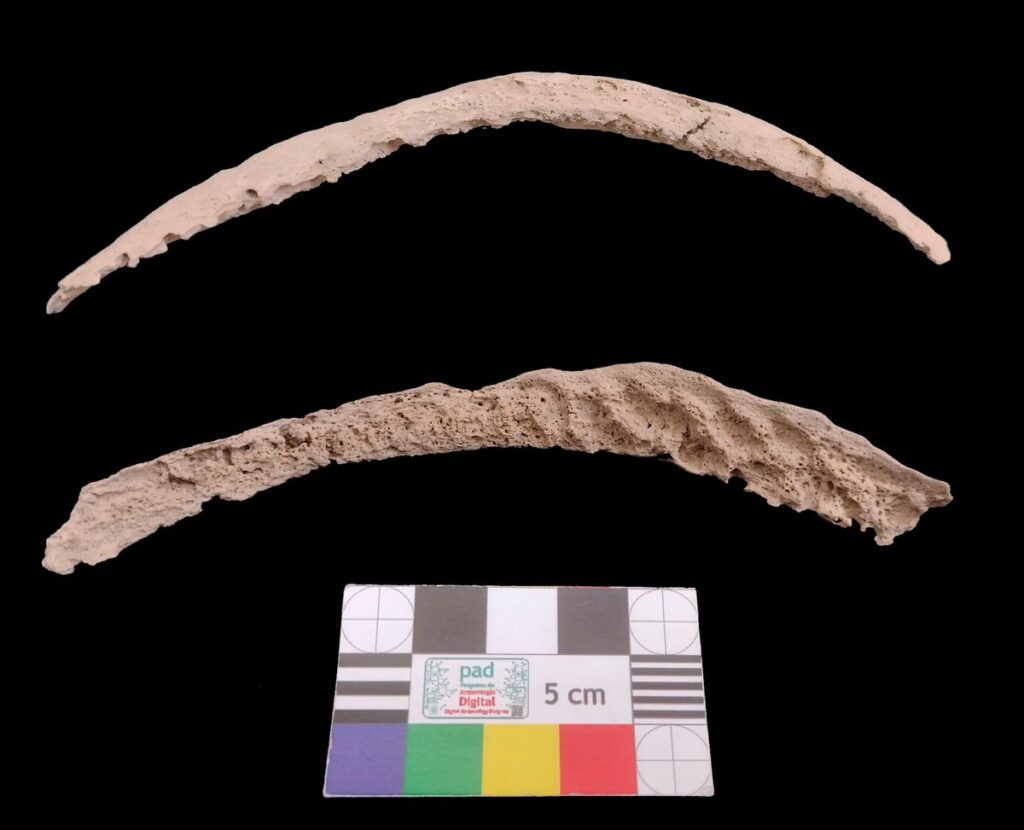From these upper hip bones, researchers extracted an ancient genome of the bacteria that causes syphilis.
Darío Ramirez
The first historical account of syphilis dates to spring 1495, when a seemingly mysterious disease ravaged the soldiers in King Charles VIII of France’s Italian campaign, then propagated throughout Europe. Now, more than 500 years later, scientists have been debating the origin of the sexually transmitted disease for decades, with some arguing that it’s not a coincidence this first recorded outbreak took place shortly after Christopher Columbus returned from his early trips to the Americas.
Now, scientists have shed more light on this debate by analyzing five ancient genomes from the syphilis disease family. Their results, published in the journal Nature this month, present evidence that ancient bacterial strains related to the syphilis disease group were widespread in the Americas before the arrival of Columbus’ expeditions.
“We’ve known for some time that syphilis-like infections occurred in the Americas for millennia, but from the lesions alone it’s impossible to fully characterize the disease,” study co-author Casey Kirkpatrick, a bioarchaeologist at the Max Planck Institute for Evolutionary Anthropology, says in a statement.
If left untreated, syphilis might cause symptoms including sores, neurological problems and lesions on bones, teeth or both. Today, antibiotics can treat the disease, but it still infects about eight million people yearly, though many cases are asymptomatic.
The arrival of Europeans brought diseases to the Americas that devastated Indigenous populations. The “Columbus theory” on the origin of syphilis suggests the explorer’s crews might have helped the disease make a journey in the opposite direction, just in time to infect Charles VIII’s army a few years later. Then, syphilis would have spread to the rest of Europe when the soldiers returned home, as well as through the slave trade and European expansion, according to the statement.
Over the years, however, some bones dating to before Columbus’ journey to the Americas have been unearthed in Europe with syphilis-causing bacteria or syphilis-looking lesions. If the lesions were confirmed to have resulted from this disease, it would negate the Columbus theory, because it would mean that syphilis was already present in Europe before his return.
“The syphilis debate was a big one, and it was a very emotional one … a famous paleopathologist described it as one of the most enigmatic questions in science,” study co-author Kirsten Bos, a physical anthropologist at the Max Planck Institute for Evolutionary Anthropology, tells the Washington Post’s Carolyn Y. Johnson.
The international team from this recent study, however, examined dozens of at least 500-year-old bones or teeth riddled with lesions from museum collections in the Americas. The team found and extracted the genomes of a precursor to the modern-day Treponema pallidum—the bacteria that causes syphilis and other related diseases, such as bejel and yaws—from the remains originating in Mexico, Chile, Peru and Argentina.
“We were able to reconstruct five [bacteria] genomes from these bones and we see that they are sister lineages to the modern strains of the bacterium that is circulating in humans today,” Bos tells the Guardian’s Ian Sample. And, she adds, “they all appear to have emerged in the Americas.”
The researchers also inferred that these ancient American variants of the bacteria shared a common ancestor that dates to 9,000 years ago at most—when some early humans had already migrated from Siberia to the Americas.
“It was in the Americas prior to European conquest,” Rodrigo Nores, a paleogeneticist at Argentina’s National Scientific and Technical Research Council and a co-author of the study, tells Science’s Andrew Curry. “It seems it’s a bacteria that evolved on the American continents, with great genetic diversity.”
“It’s an elegant paper,” Molly Zuckerman, a paleopathologist from Mississippi State University who was not part of the study, adds to Science. “The authors do a superb job of getting certainty that only ancient genomic work could provide as to origin and emergence.”
Though the study can’t prove that Columbus’ crew picked up the disease and brought it back to Europe, the researchers do suggest it was European colonization that spread syphilis throughout the rest of the world.
Bos, however, doesn’t “think we’re solving the mystery necessarily, because there are still so many important questions we have to answer,” she tells the Guardian. “We’re looking at very limited sources of data, and we’re trying to analyze them and in a very holistic, comprehensive way, and to be very open-minded. I think the narrative will continue to be debated.”


